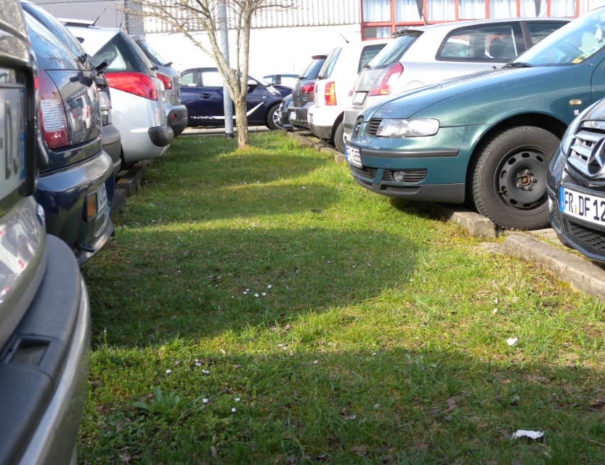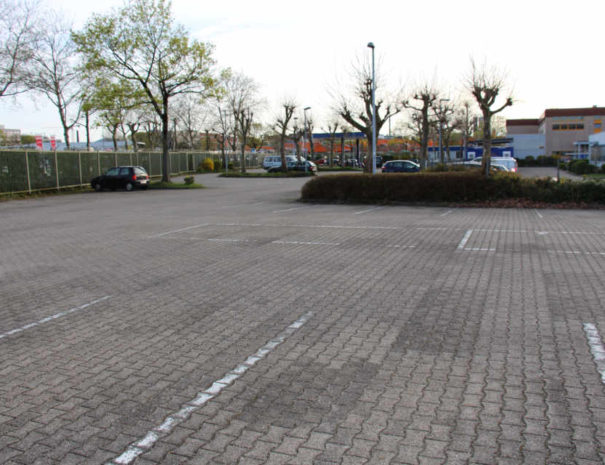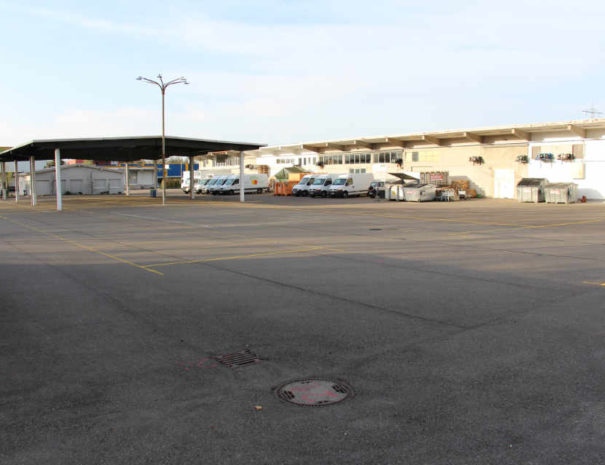Parkplätze
Parking Spaces
Surfaces of parking spaces and driveways
Parking spaces occupy very large areas. However, asphalt and concrete pavement offer no opportunities for animals and plants to live. It is therefore worthwhile to examine alternative design concepts. Aisles of parking lots are usually paved. This has the advantage of being durable and easy to care for. The snow can also be well cleared. However, parking spaces should be water-permeable: high-traffic parking spaces in supermarkets can be surfaced as concrete pavement with grass or stone junctions, employee spaces adjoined as water-bound or gravel lawns.




Drainage
After a heavy rainfall, it is common for rainwater to accumulate in large industrial areas. Since the introduction of sewage surcharges, drainage into the sewage system has become quite expensive. For this reason, new systems and parking area redesigns can pay off. Water drainage in parking areas can be reduced by 15 % if curbs are designed as green seepage troughs. A curb that serves as a wheel stop but also leaves gaps for water to run off, optimizes drainage in parking spaces. It seeps into the trough. The troughs can be grown with meadows or wild perennials: Malva, Eupatorium cannabinum, Juncus, Symphytum, Filipendula, Agrimonia
Integration of parking areas
Parking spaces don't have to be the first thing that catches our eye. Parking spaces can be lowered and integrated into the terrain. They can be planted with hedges made from native shrubs, loose shrubs of wild perennials and grasses. Even in sloping terrain, the terraced levels of a parking lot can be separated from one another with planted embankments.
Weather and sun protection
Parking areas can be combined with climbing plants on a trellis. A green roof parking lot is another variant alongside a green underground car park, which is the most expensive.
Shading by tree grids
Parking spaces with one tree for every 6 to 10 parking spaces are standard today and are usually detailed in the development plan. In order for the trees to thrive, they should be entitled to an are the size of a parking space. Rows of trees can also be joined with trough wells for rainwater. Acer campestre and Acer platanoides, Carpinus betulus, oak and elm are ideal. Tilia are not recommended. They leave marks on the car with their sticky honeydew. Tree surroundings can be planted with wild perennials, grasses and low shrubs - these are ideal nectar plants for butterflies and bees.
Source of information
Modern companies in harmony with nature Guideline for a near-natural company site Hrsg: LUBW State Institute for Environment, Measurements and Nature Conservation Baden-Württemberg, Karlsruhe 2013
